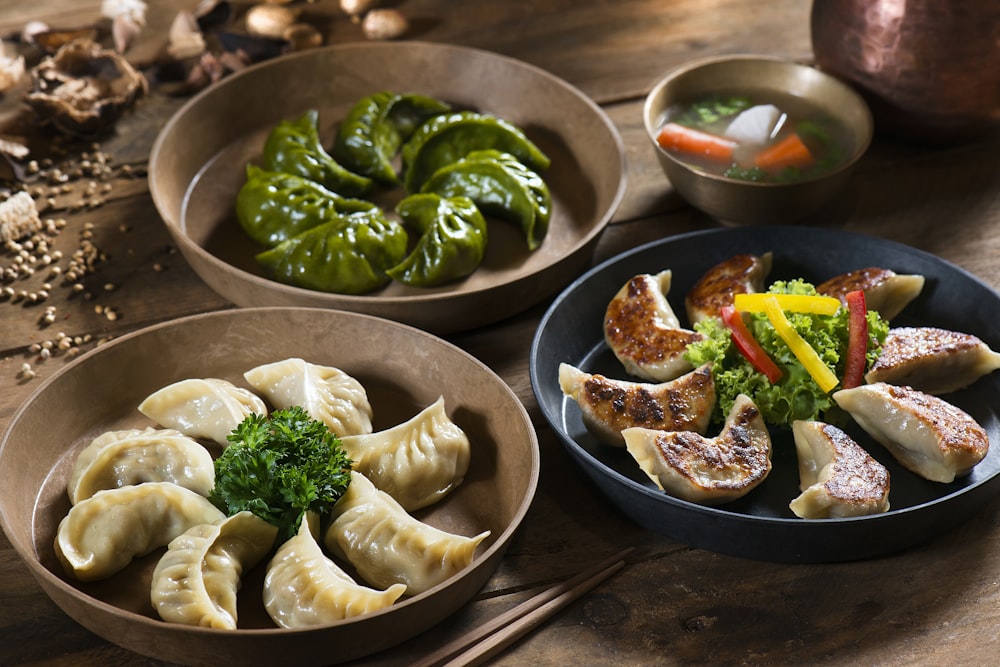
Dumplings have been around for a long time in the cuisines of many different cultures. It has been a popular snack in many parts of the world. In fact there are now over hundreds of types of dumplings around the world. What to know more about your favorite snack? Let’s find out!
The History of Dumplings
While many people have accepted the history of dumplings started with Zhang Zhongjing, the general idea of dumplings as we know them today followed quite an interesting and varied trajectory.
Because you can find dumpling variations in nearly every culture—Italian raviolis and Brazilian empanadas are just two of the offshoots of the traditional Chinese dumpling—the history of the dumpling has many different starting points, even if their official invention was during the Han Dynasty. Recipes for dumplings appear in later years in ancient Roman texts, with the very first dumpling recipe itself found in Apicius, a Roman cookbook.
While dumplings appeared in many forms for many centuries during ancient times, it wasn’t until the 17th century that they finally got their name. The first use of the term “dumpling” can be found in an English text from 1600, where it was noted that the word was perhaps of German origin. And while Zhongjing may have created dumplings in the first place to help people survive brutal winters, other cultures created dumplings for other reasons, such as to help extend the life of meat and to make use of surplus grains.
What this history of the dumpling tells us about their meaning is that some foods span the length of space and time. Many different cultures invented their own dumplings, and many of those dumplings look quite different than what Zhongjing first created, such as gnocchi and matzo balls. And by understanding this unique history, we understand more about how food has functioned in general throughout the human experience—both as a practicality and as medicine for the mind, body, and soul.
There is simply no food that’s better than the dumpling for illuminating this important point and showing us that for all of our differences, food is one of the primary unifying factors that binds us together.
Five different stuffings and thier meanings
Dumplings can be filled with everything from pork to shrimp to chicken to mutton, as well as vegetables like scallions, spinach, and chives. But did you know certain stuffings has special significance?
Fish. The Chinese word for fish, yu, sounds like the word “abundance,” making it a Spring Festival must-have. A fish-filled dumpling, we imagine, will give you even more bang for your buck.
Beef. The bull stands for strength and beef filling for strong financial growth.
Celery and leek. Work hard for your money? These veggies can help. The Chinese words for celery and leek both sound like “industrious wealth.”
Mushroom. In Chinese culture, mushrooms symbolize longevity. In fact one particular species, ling zhi, is known as the “mushroom of immortality,” although for dumplings you might want to try the shiitake variety.
Cabbage. The humble bai cai (which sounds like “hundred wealth”) is a popular good luck symbol in Chinese culture. The Qing Dynasty Jadeite Cabbage is considered one of the Three Treasures of the National Palace Museum in Taipei, Taiwan (the other two are the a Mao Gong Ding and a pork belly sculpture, natch) while giant cabbage sculptures have sprouted in Anyang, Henan province and Liaocheng, Shandong province.
Dumplings on Guinness Book of World Records
Largest cookery lesson. A world record was set in Zhengzhou, China in 2015 when over 6,000 people learned how to make vegetable dumplings.
Largest serving of dumplings. In 2012, A Chang Meat Dumpling Restaurant in Taipei, Taiwan set the record for the biggest serving of dumplings. Weighing in at over 1,500 pounds, this super-hefty helping of pork jiaozhi was so large, it had to be unveiled in a stadium.
Largest dumpling mosaic. The Xiao Heng Dumplings® brand set this record in Beijing just a month ago. Measuring more than 119 square feet, the mosaic was made with over 12,000 dumplings.
Most dumplings eaten in one minute. As of 2016, Canadian Peter Czerwinski, aka Furious Pete, is the king of dumpling eating with 10 gorged in 60 seconds.
Dumplings may have had humbling beginnings, but their presence all across the world is a clear sign of their enduring popularity.

Leave a Reply